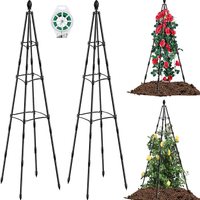What seeds to plant in April
Grow your own this Spring
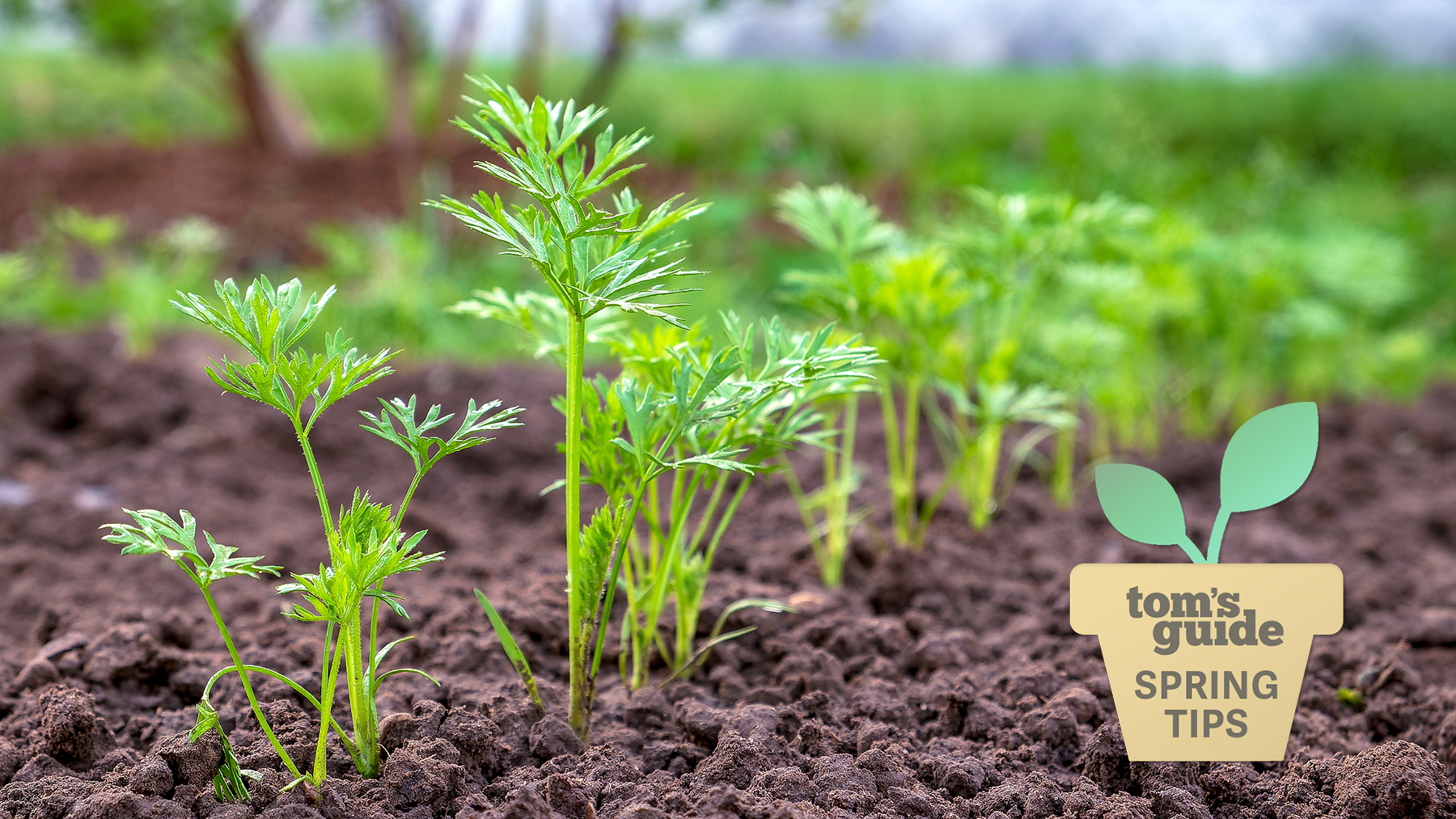
There’s nothing more rewarding than growing vegetables and flowers from seeds. Even if you are a novice gardener, you’ll experience the joy of watching new plants come to life while you can taste your efforts or enjoy a choice of beautiful flowers in bloom.
With frosts behind us, April is a good time to start sowing seeds to get your yard ready for spring and the growing season. As the soil warms up, you can sow seeds directly into the soil or into pots where they can be kept inside until they are ready for planting.
My pots of zucchini seeds are already sitting on my windowsill and I eagerly await to see them sprout. I’ve also planted some broad bean seeds directly into my vegetable patch and look forward to eating them with melted butter and black pepper.
If that’s not enough to entice you, we’ve got plenty of other ideas for what seeds to plant in April.
Vegetable seeds to sow in April
April is the best time to plant most vegetable seeds as we’ve seen the last frosts in all of the USDA Plant Hardiness Zones. Apart from discovering what planting zone you're in, the Urban Farmer suggests checking your gardening zone for the last frost dates to be doubly sure. Insert your ZIP Code into the search box on this USDA map to find out.
Beets
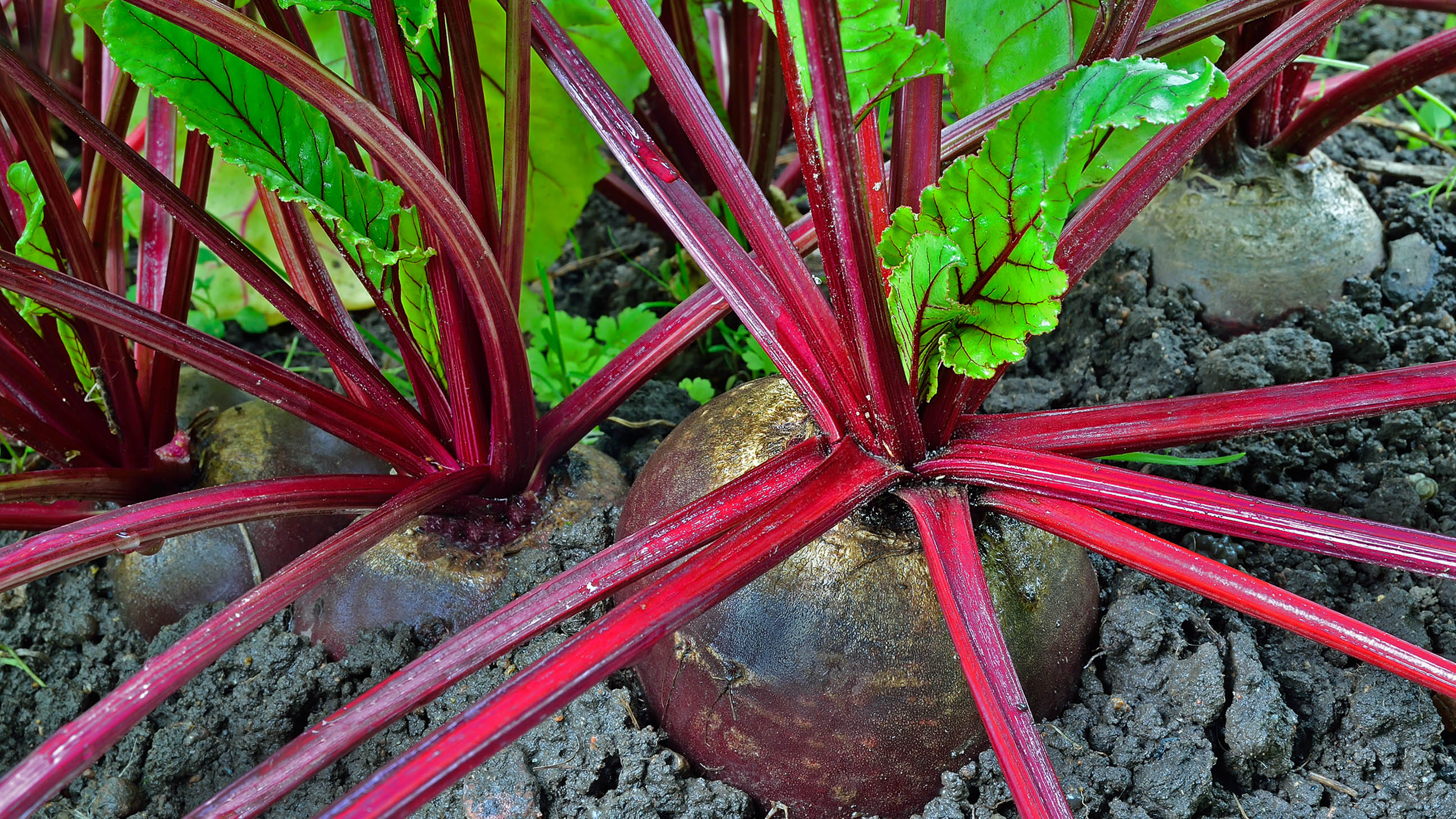
If you’re new to growing your own, beets are a good choice as they are easy to grow. This nutritious vegetable is also ideal to grow if space is limited, as it can be grown in a pot. And, if you’re an impatient gardener like me, you can enjoy a harvest in as little as 40 days, although it could take up to 60.
Sow the seeds in a shallow drill about ½- inch deep and space 4 inches apart, leaving a 12-inch gap between each row. Water the plants regularly.
Sign up to get the BEST of Tom's Guide direct to your inbox.
Get instant access to breaking news, the hottest reviews, great deals and helpful tips.
Beets are at their sweetest when they are the size of a golf ball — leave them much longer and they become woody. The colorful red-veined leaves can also be eaten, making them an excellent all-round choice.
Carrots
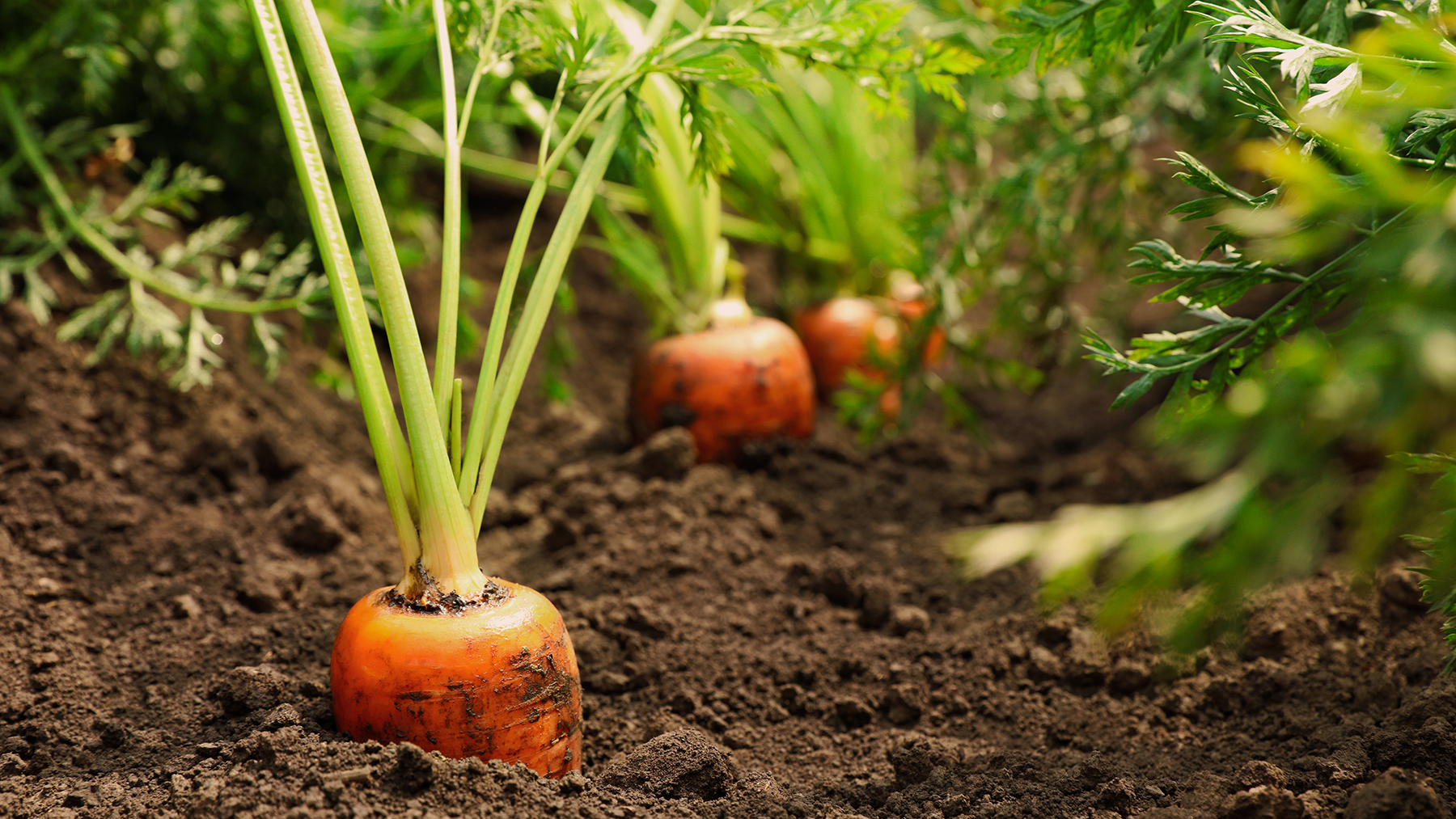
Carrots are a nutritious vegetable high in Vitamin A, which are a common crop found in many vegetable patches. Available in orange, white, rainbow and purple colors they make a tasty dish for humans and our furry friends.
Carrot seeds can be sown directly onto well-prepared soil free of stones, so ensure you prepare the soil before planting. Create a drill and sow the seeds about 2-3 inches apart before covering with a thin layer of sieved soil. Finally, water the soil using a watering can with a fine nozzle, this will disperse the water evenly.
These root vegetables will be ready to harvest after about two-and-a-half months when there diameter reaches about half an inch. To remove from the ground, loosen the soil with a fork before pulling them out.
Kale
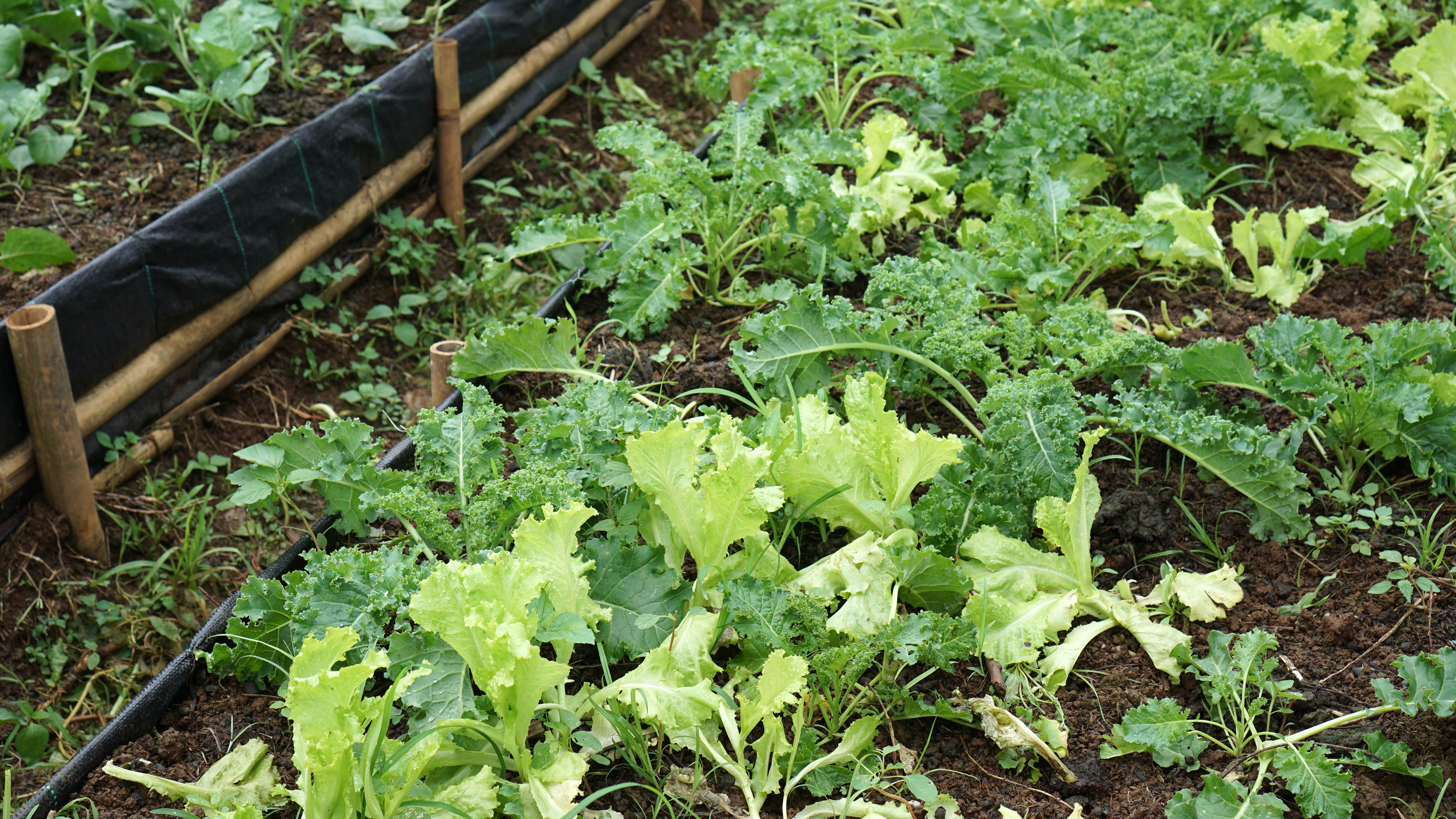
I’m a big fan of kale after discovering it’s tasty stir-fried and sprinkled with sesame seeds — who knew greens could taste so good? It’s a superfood full of antioxidants and vitamins that’s worth having in your vegetable patch.
Kale can be sown indoors or outdoors and transplanted outside 6-8 weeks later. Once the seedlings have developed, they should be planted in moist, well-drained soil and positioned in full sun to partial shade.
When harvesting, kale can be grown as a ‘cut-and-come-again’ crop — once you cut the leaves, more will spring back. The young leaves can be harvested for salads or left to mature into winter greens.
The advantage of growing kale is that you won’t have a problem with pests, although you may need to keep away the birds!
Flower seeds to sow in April
There are plenty of flower seeds that can be sown in April, but just like with vegetable seeds, it's best to check if you've seen the last of the frosts before sowing flower seeds directly outdoors. If not, sow them in trays or pots and keep them on a sunny windowsill or within a greenhouse before planting them out.
Cosmos
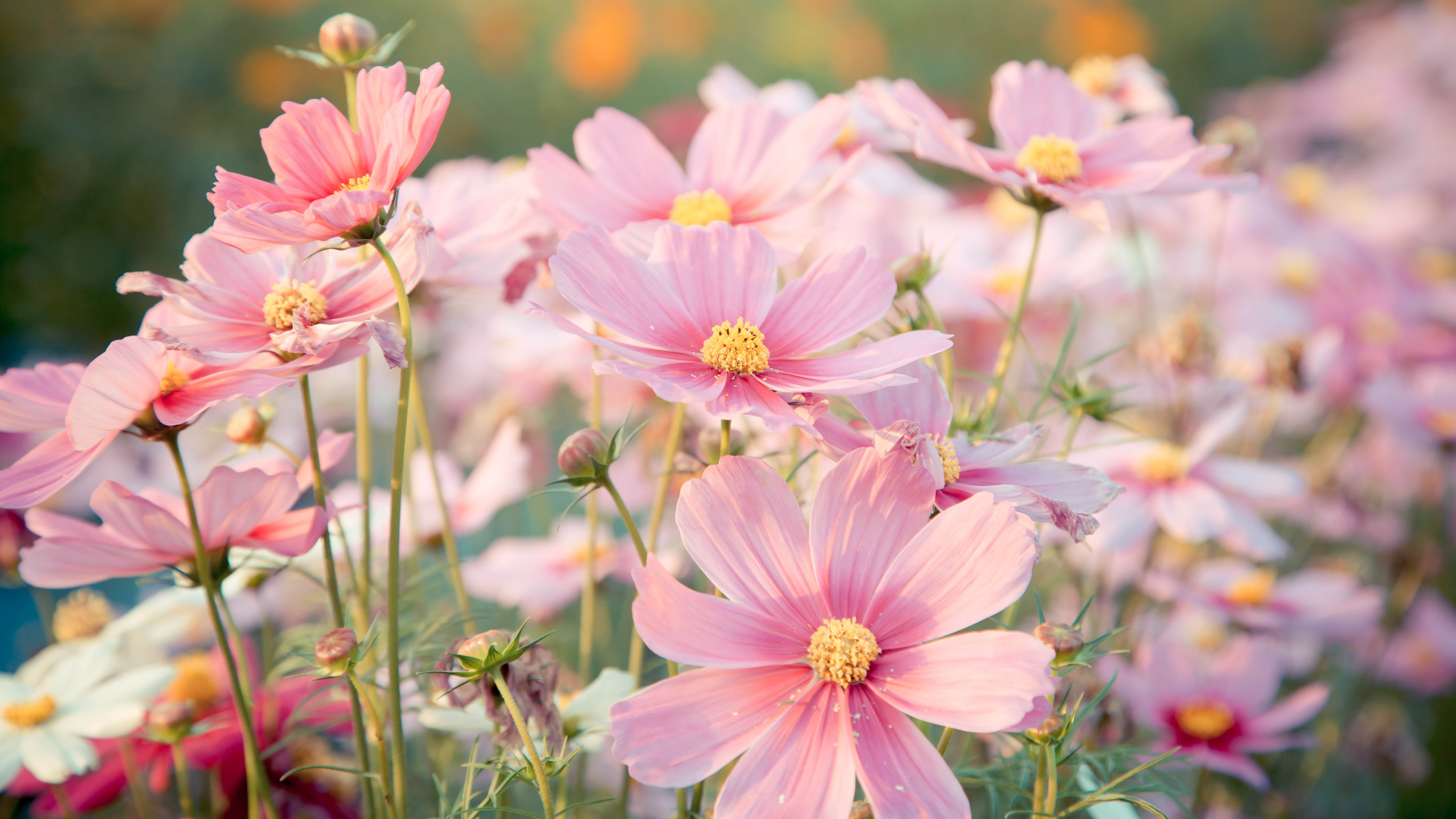
Cosmos are beautiful, delicate flowers with feathery leaves that come in a bright array of colors. They are easy to grow from seed and will flower in about 12 weeks, where they look delightful in borders and containers.
The seeds are best sown indoors within a seed tray, and once two leaves have sprouted, they can be transplanted into 1¾-inch pots, where they should be left undercover to grow. Then, in May, they can be hardened off for about a week, by placing them on a patio or within an open cold frame, before planting them where you want them to grow.
Why do some plants need hardening off?
Hardening off is a term used to describe the process where plants started indoors or within a greenhouse are acclimatised to a cooler climate outside before they are planted out.
Nasturtiums
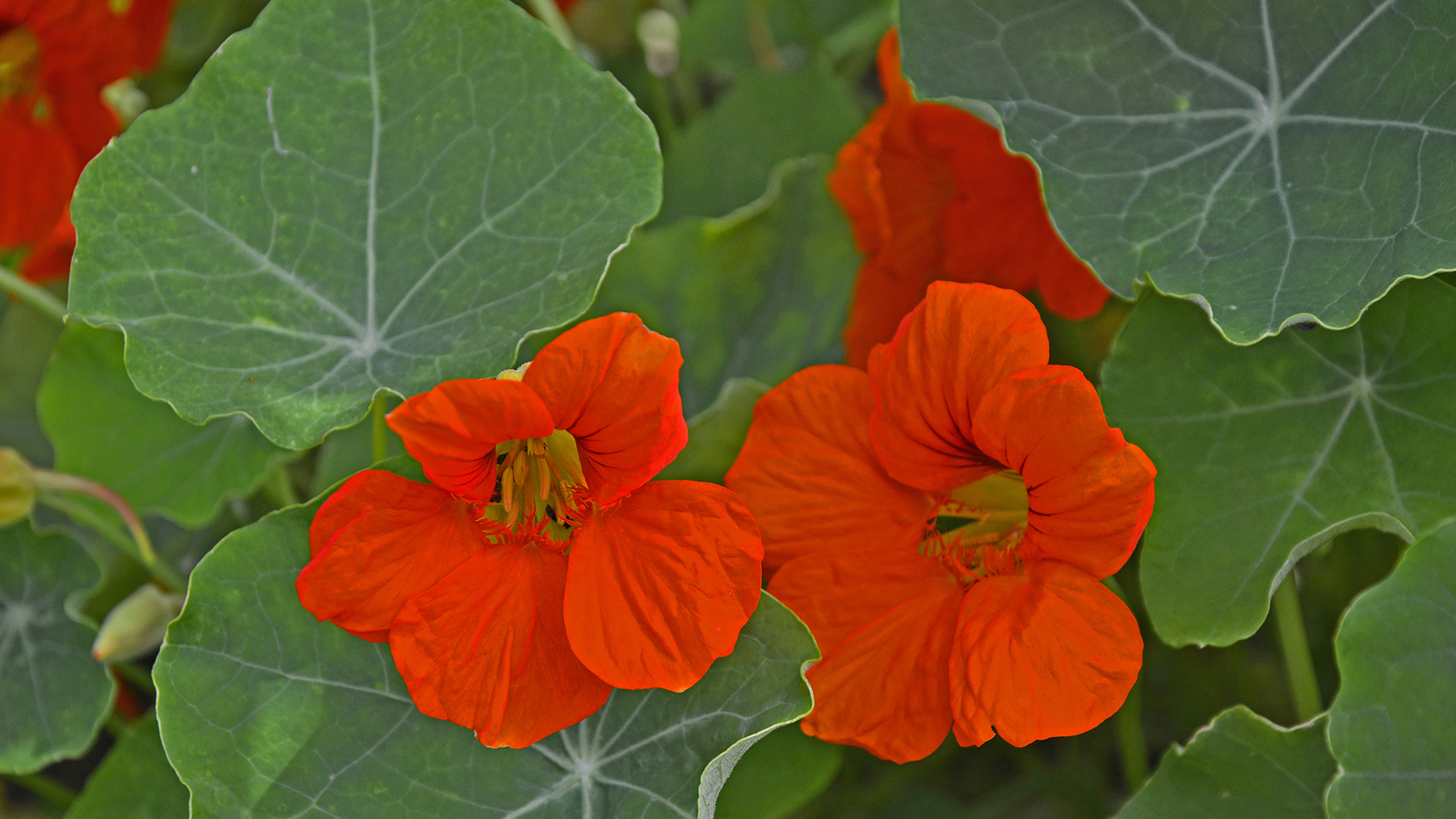
If you’re a fan of vivid color, you’ll love the bright orange, yellow and red tones of nasturtium blooms. Apart from the attractive flowers, I particularly like the circular-shaped veined leaves.
When selecting which nasturtium seeds to buy you’ll have a choice between bushy, dwarf or climber varieties. Bushy varieties are ideal for borders and hanging baskets, while climbers can be trained up obelisks or woven through beds. I also think they look stunning planted in vegetable patches, as they give a lift of color. They’ll also attract butterflies and other pollinators while keeping pests off your veggies. What’s more, you can add the flowers and leaves to salads.
These plants aren’t fussy about the soil quality, as fertile soil will encourage more leaf growth over the flowers, but the soil does need to be free-draining.
Nasturtiums can be sown directly outside if the threat of frost has passed, or into 3½-inch pots and placed in a greenhouse or sunny windowsill. If sowing them into pots, allow them to harden off outside in the daytime , before planting them out.
If sowing directly outside, sow the seeds ½-inch deep and 4 inches apart, covering them with soil. The seedlings should appear in about two weeks, when they need to be thinned out to 12 inches apart.
Garden Obelisk Trellis, 2-pack: $23 @ Amazon
This garden obelisk trellis is ideal for training and supporting climbing flowers within your beds or containers. Measuring 63 inches tall, the trellis is constructed of plastic coated metal that's rust and heat resistant. The trellis is easy to assemble and the height can be adjusted if needed.
Sweetpeas
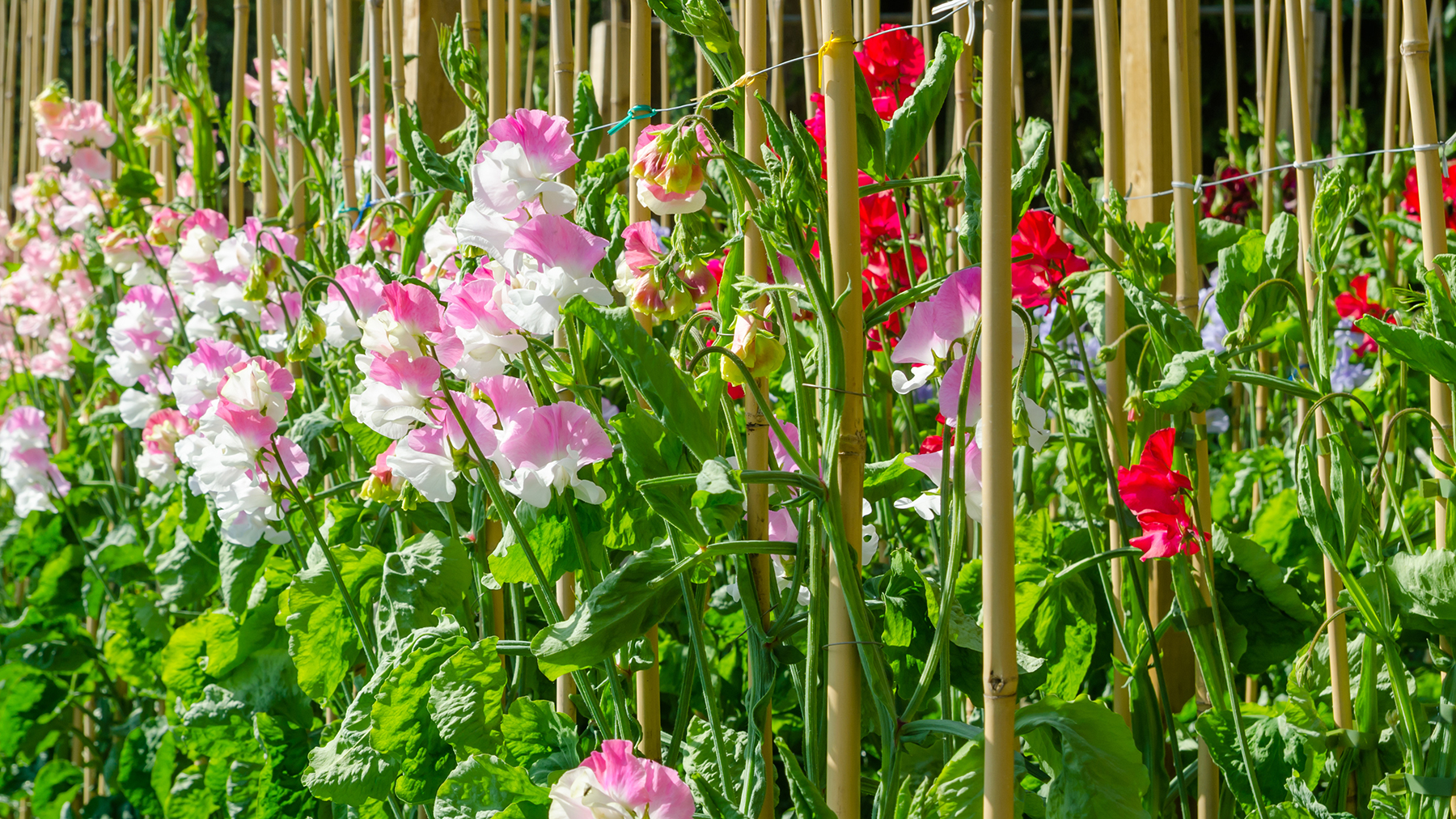
These delicate flowers have a glorious sweet scent and are excellent for cutting and displaying in vases indoors. Outside, they can be trained using a wigwam constructed out of bamboo canes.
Begin by sowing the seeds into 3½-inch pots, placing three in each one, or use a seed tray with peat-free compost. The pots or seed trays should then be placed in a cold frame or greenhouse.
Your sweet peas will be ready to plant out in late May, but before doing so, leave them outside in the daytime for about a week to help them harden off. Once the flowers appear, your plants will benefit from being fed with a high potash fertiliser — a tomato food will do the trick.
More from Tom's Guide

Camilla Sharman has worked in publishing and marketing for over 30 years and has covered a wide range of sectors within the business and consumer industries both as a feature, content, and freelance writer.
As a business journalist, Camilla has researched articles for many different sectors from the jewellery industry to finance and tech, charities, and the arts. Whatever she’s covered, she enjoys delving deep and learning the ins and out of different topics, then conveying her research within engaging content that informs the reader. In her spare time, when she’s not in her kitchen experimenting with a new recipe, you’ll find her keeping fit at the gym. In the pool, stretching at a yoga class, or on a spin bike, exercise is her escape time. She also loves the great outdoors and if she’s not pottering about in her garden, she’ll be jumping on her bike for a gentle cycle ride.
